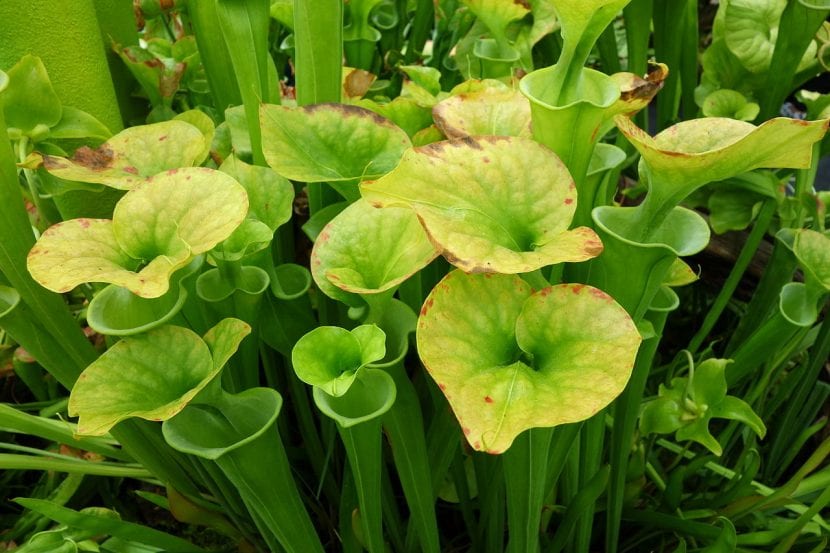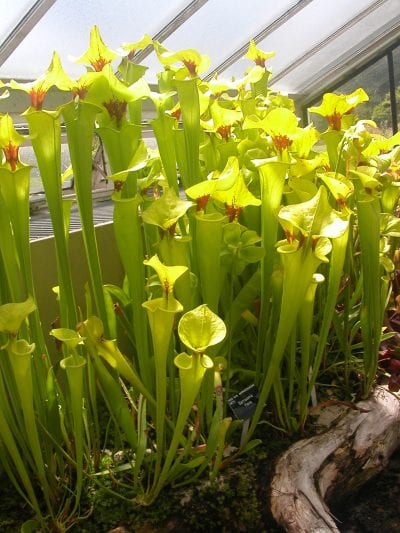
Image - Wikimedia / Daderot
Carnivorous plants are one of the most curious plant beings that exist: unlike other plants, they find so little nutrients in the soil where they live that they have evolved developing leaves that have become traps for insects. One of the species that I personally like the most is the Saracenia Flava.. Because?
Because you put it in a place with direct sunlight and you keep the substrate always moist, and you will have Sarracenia for years and years. It is very grateful. And beautiful, too, as you will be able to see below.
Origin and characteristics

Image - Flickr / eleanord43
It is a carnivore native to the United States, specifically from southern Alabama, through Florida and Georgia, to the southern coast of Virginia and South Carolina. Develops very tall pitcher traps, up to one meter, and thin, no more than 3-4cm. These are of a very striking green-yellowish color, which highlights the summer even more with the reflection of the sun.
Inside the "lid" of the trap, at the junction between the rest of the tube, produces nectar that contains sugars that attract insects, as well as toxins that we do not know if they are toxic to prey. In any case, it is covered with very short hairs that point downwards and that are very slippery, preventing the insect from leaving the trap. Once it falls, the prey is drowned and digested by the Sarracenia's digestive enzymes.
But not everything is negative: in spring it produces large flowers with long yellow petals from 50cm long stems.
What are their cares?
If you want to have a specimen of Sarracenia flava, we recommend that you provide the following:
- Location: it must be outside, in full sun.
- Earth: substrate composed of blond peat mixed with perlite in equal parts. You can get the first here and the second here.
- Irrigation: keep the substrate always moist. You can put a plate under it and fill it up.
- Subscriber: not paid. The roots are burned by contact with these products.
- Multiplication: by seeds in spring.
- Transplant: every two years, in spring.
- Rusticity: withstands light frosts down to -3ºC.
What did you think of this species?
